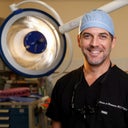I want an earlobe repair or reduction surgery. However, I have a hypertrophic scar on my shoulder for the past 3 years. I don't know how I got it. It's 1.5 cm long. No surgery or injury that I can remember. I am 30 years old. I am scared of keloid formation once I carry out an earlobe reduction surgery. How scared should I realistically be?
Answers (23)
From board-certified doctors and trusted medical professionals
Dr. Thomas T. Le, MD

Dr. Thomas T. Le, MD
Board Certified Facial Plastic Surgeon
Answer
Dr. Raffy Karamanoukian, MD, FACS

Dr. Raffy Karamanoukian, MD, FACS
Board Certified Plastic Surgeon
Answer
Dr. Kevin Brenner, MD, FACS

Dr. Kevin Brenner, MD, FACS
Board Certified Plastic Surgeon
Answer
Dr. Vincent N. Zubowicz, MD

Dr. Vincent N. Zubowicz, MD
Board Certified Plastic Surgeon
Answer
Dr. Stephen Prendiville, MD

Dr. Stephen Prendiville, MD
Board Certified Facial Plastic Surgeon
Answer
Dr. Otto Joseph Placik, MD

Dr. Otto Joseph Placik, MD
Board Certified Plastic Surgeon
Answer
Dr. Tanveer Janjua, MD

Dr. Tanveer Janjua, MD
Board Certified Facial Plastic Surgeon
Answer
Dr. Jeffrey J. Roth, MD, FACS

Dr. Jeffrey J. Roth, MD, FACS
Board Certified Plastic Surgeon
Answer
Dr. Robert L. Kraft, MD, FACS

Dr. Robert L. Kraft, MD, FACS
Board Certified Plastic Surgeon
Answer
Dr. Andrew Kaufman, MD
Dr. Andrew Kaufman, MD
Dermatologic Surgeon, Board Certified in Dermatology
Answer
More Earlobe Repair Questions
See all Earlobe Repair Q&AWE SEND PRETTY
EMAILS
What’s trending? Who’s turning heads? Which TikTok myths need busting? We’ve got you. No fluff, no gatekeeping—just real talk. Get our free, unfiltered newsletter.